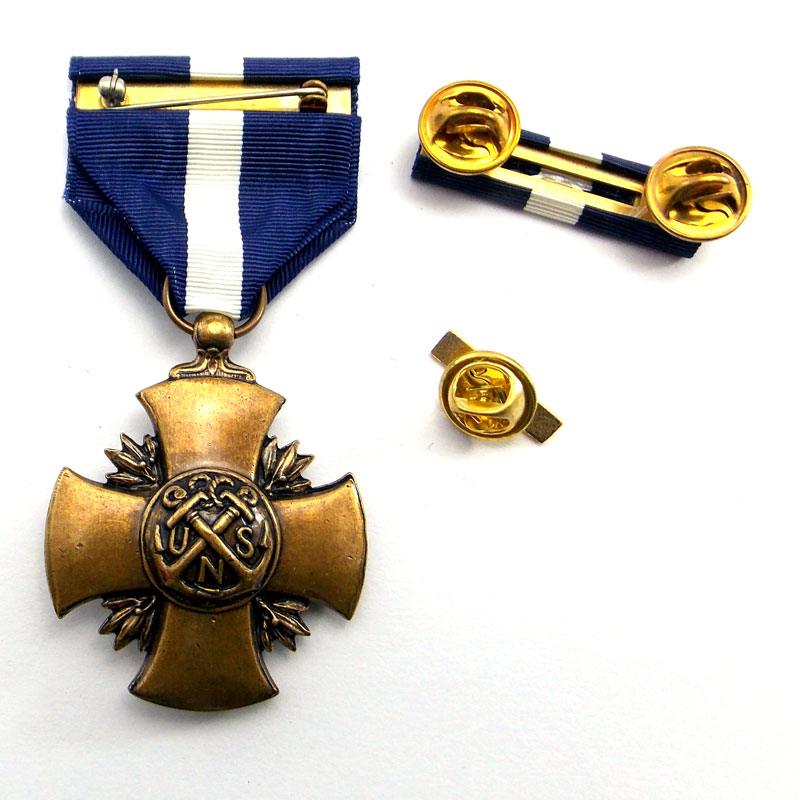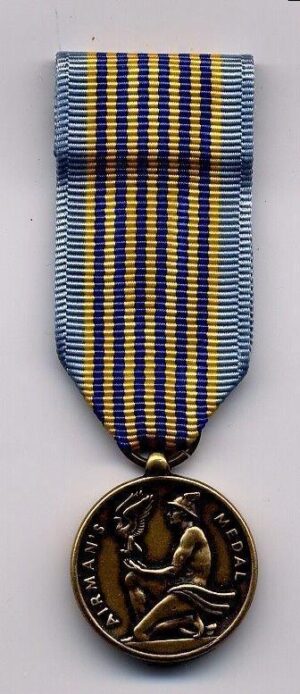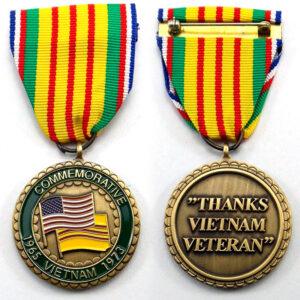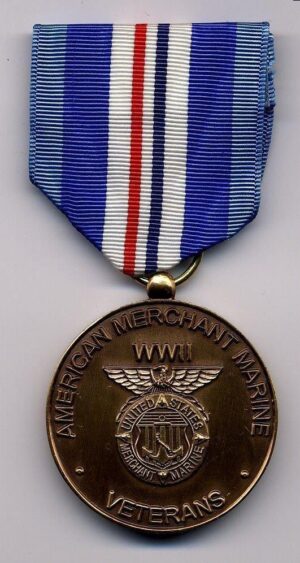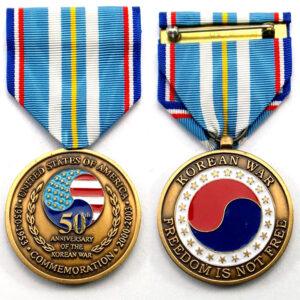The Navy Cross is the United States military’s second-highest decoration awarded for valor in combat. The Navy Cross is awarded primarily to a member of the United States Navy, Marine Corps, and the Coast Guard (when operating under the Department of the Navy) for extraordinary heroism. The medal is equivalent to the Army Distinguished Service Cross, the Air Force Cross, and the Coast Guard Cross.
Obverse: The medal is a modified cross pattée one and a half inches wide. The ends of its arms are rounded whereas a conventional cross patée has arms that are straight on the end. There are four laurel leaves with berries in each of the re-entrant arms of the cross. In the center of the cross a sailing vessel is depicted on waves, sailing to the viewer’s left. The vessel is a symbolic caravel of the type used between 1480 and 1500. Fraser selected the caravel because it was a symbol often used by the Naval Academy and because it represented both naval service and the tradition of the sea. The laurel leaves with berries refer to achievement.
Reverse: In the center of the medal, a bronze cross pattée, one and a half inches wide, are crossed anchors from the pre-1850 period, with cables attached. The letters USN are evident amid the anchors.
Ribbon: Navy blue ribbon with a center stripe of white.
Ref: No. 5, Plate 2, Sheet 1, US Military Medals 1939 to Present, Foster & Bort.

